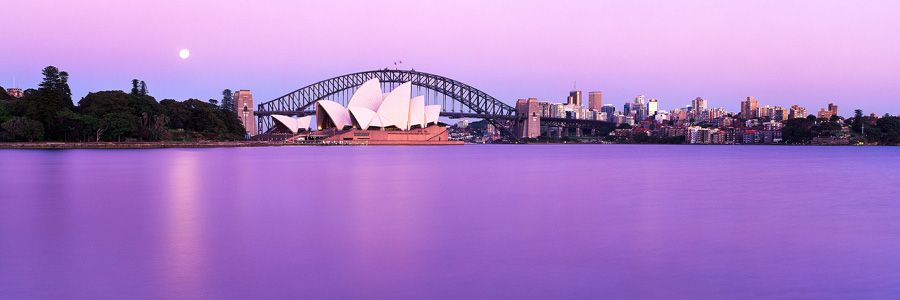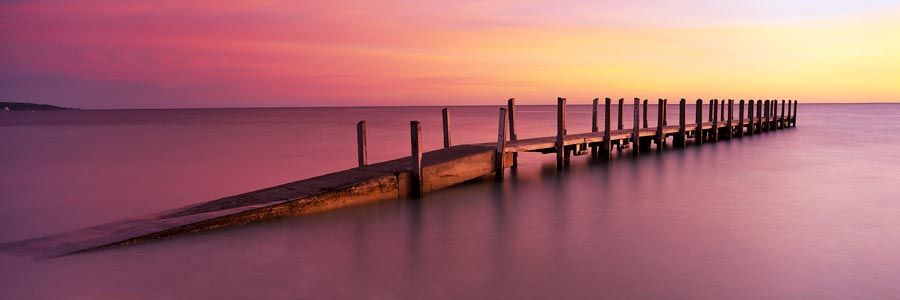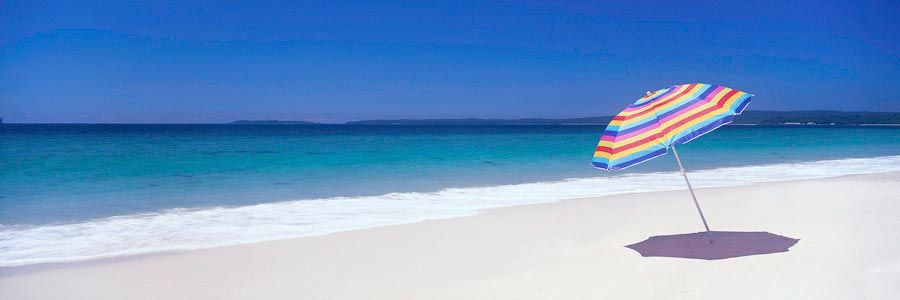I discovered Tim through Flickr. He’s one of those annoying photographers who every time he posts a photo you go ‘damn, this guy’s just too good’ and hang up your gear. He has not only an excellent sense of composition, but a love for his surroundings, which I think filters down into his photography. As yet another master medium-format Aussie landscape shooter, he was a shoo-in for our interview series.
1) What’s the most challenging photo you’ve taken to date and why?
The concept of what defines a ’challenging photograph’ is an interesting one. Many of the images in my portfolio were challenging for a number of reasons, including adverse conditions, technically difficulties and challenging journeys to capture the image. I will take the liberty to explain a couple examples below.
Technical Difficulties
I principally use a medium-format film camera, a Fuji GX617 with slide film. As a consequence of using slide film, which inherently has a narrower dynamic range than digital camera, I frequently face a myriad of challenges detached but still akin to the challenges faced by a digital photographer.
Technically, the most difficult image I have captured is my image of Sylvia Falls in the Blue Mountains entitled ‘Nature’s Veil’. Shooting a fixed focal length lens has its drawbacks: when a zoom lens can go from narrow to wide, I must use my feel. In this image, I found myself knee deep in cold water with wild rain and fog being blown off the valley causing a range of metering headaches. During my exposure, the ambient light changed about 2 stops (from 4 minutes to 1 minute) combined with the added complexities of reciprocity failure (the film’s exponential inability to record light during long exposures) I was looking at a change in shutter speed from approximately 10 minutes to 2 minutes. I did some quick calculations (read: guessed the exposure) on the fly and released the shutter at six minutes. Thankfully the image turned out. The fog blew off the valley, and I only had one opportunity to capture this scene. Thankfully, it worked.
Challenging Conditions
In regards to challenging conditions, my image of Craig’s Hut entitled ‘Stockman’s Ride’ is near to the top of the list. This was the third time I actually attempted to shoot Craig’s Hut as it has always been high on my list of locations. The first two attempts ended short of the goal due to road closures from snow and flash floods. My third attempt almost ended the same way with the main access route closed for the winter season. Thankfully, with a little bit of initiative, we found our way in via a 4×4 trail. After a bumpy and sometimes treacherous journey we found ourselves at Craig’s Hut just as a snow storm was blowing in off the mountains As the sun dipped and the incredible light stretched across the scene, the snowfall got harder and harder, and the temperature dropped below freezing. I reached into my bag and found an old plastic shopping bag that I modified into a raincoat for the camera and a umbrella shielded snow from hitting the lens. Despite the conditions, it certainly was a rewarding shoot and I came away with one of my personal favourite images.
Challenging Journey
As far as challenging journeys go, it’s hard to beat my recent 18-hour canyoning expedition that almost ended in disaster. Ever since I saw the incredible images by National Geographic photographer Carsten Peter, I had an insatiable yearning to photograph Claustral Canyon in the Blue Mountains. The day started before dawn and we reached the entry point at 7am to find the entry route closed by private property. Unperturbed we ventured in the style of Bear Grylls, wildly bush-bashing through the eulcytpus forests and abseiling down cliffs. We reached the canyon proper just before lunch and were immediately met with three 10m-15m abseils down waterfalls in the narrow constrictions of the canyon where the ambient light was almost nil.
Once we hit the bottom of the canyon, the landscape was like nothing I’d ever seen; like the canyons of the Antelope slots meets the Amazon. Due to time constraints, we only managed about 30 minutes of shooting before we had to start the exit. This is where the story turns pear shaped. We took a wrong turn at the exit ravine, and soon faced a cliff. Naturally, we thought, we had to climb it. Once at the top, we quickly realised it was a mistake and we were bush-whacked. After consulting the map, we quickly figured out where we had to be, but it involved a 60 metre abseil with 30 metres of rope (we had a 60 metre rope, but when abseiling you double the rope on itself). Thus, we had to abseil half way down the cliff, then pendulum swing across 10 metres at the bottom of the cliff to a tree where we rigged up another abseil. We hit the bottom of the cliff just as the light was fading into darkness and were faced with a 600m vertical climb (over 5km) out of the canyon to the safety of the road, in the dark. The climb was utterly exhausting and the track at times non-existent as our supplies of food and water dwindled. We finally reached the safety of the road at 1am the following day.
… all that for 3 rolls of film. I haven’t had the images scanned yet, but they will be uploaded in due course.
2. How did you find the transition to medium-format film photography? What are its advantages/disadvantages?
As I alluded to above, shooting on medium format slide film presents its own set of unique challenges, but for this very reason I find shooting film enriching and more rewarding than shooting on digital. The most apparent challenge I faced when I initially started using medium format film was the inability to review images on-site. The modern convenience of hitting a button and reviewing the image for exposure and composition was lost and I was forced to shoot on instinct. Understanding the concepts of appreciating light, the mechanics of exposure (aperture, ISO and shutter speed), reciprocity and the aesthetics of film became critical to developing this instinct.
The advantages of medium format film photography are obvious. The aesthetics of Velvia 50 (my film of choice) hallmarked by rich saturated colour and crisp contrast are hard to replicate in Photoshop. It all makes sense upon seeing a well exposed transparency on a light table. Furthermore, the image clarity and sharpness are second to none, not to mention the huge file sizes.
It wouldn’t be a fair comparison without mentioning the cost of film photography. It’s expensive, very expensive. The costs are not limited to film and processing costs but also the cost of scanning the image for digital production and display.
Learning medium format film photography certainly was a steep learning curve but I feel that I have crafted an approach to my photography that emphasises the interplay of light and form within a landscape.
3. How has your post-processing style developed?
Despite shooting on film, post-processing is still central to my image making. Digital post-production techniques range from simple image improvements at one end of the scale to outlandish and imaginative image alterations that bear no semblance to reality at the other. My approach sits firmly in the former, not the latter.
Many film photographer think it’s ‘cheating’ when you use digital techniques to change an image from its original capture as it augments reality, however it is my opinion that this is not a logical argument. No film-based photograph truly represents reality, so why should photographers limit themselves in a digital world, despite the method of capture? A photographer must possess a combination of skill, patience, knowledge and a vivid imagination to create wonderful vistas and striking landscapes. It’s my opinion that digital post0production allows me more creative bandwidth to transform my observations into my visualisations. I don’t use wholesale digital editing techniques; rather I use my digital post-production to enhance my photographs through minor contrast, colour and exposure alterations.
4. What’s on your ‘to shoot’ list?
Like many photographers, my ‘to-shoot’ list is a dynamic list: it grows longer by the day and rarely shrinks as for every location I shoot another two are added. While I have ambitions of photographing some of the world’s most striking landscapes, I want to concentrate on building my portfolio of Australian images first, thus locations in the Northern Territory, Queensland and Tasmania are high on my list.
5. What can we expect from you in 2013?
I have a 10-day trip to Cairns booked in March 2013, so (weather and conditions pending) I’d like to come away with an array of images from the Tropical North, including plans to shoot the Great Barrier Reef from the air. Furthermore, I have plans in the works to photograph the Snowy Mountains in winter, so hopefully I get the opportunity to capture some unique images of Australia’s alpine region under snow.








